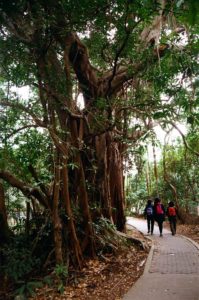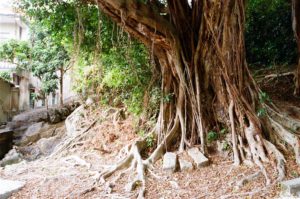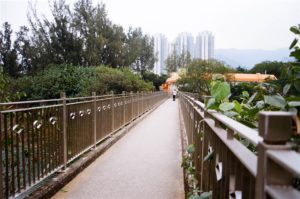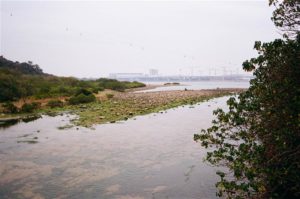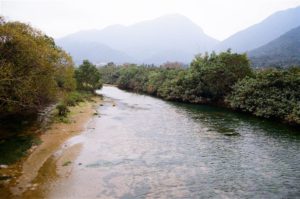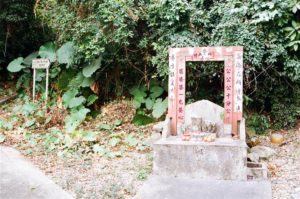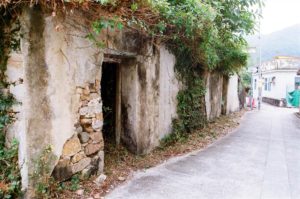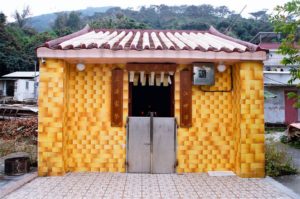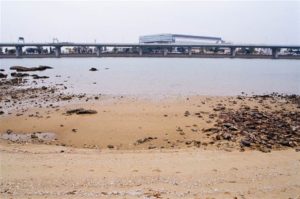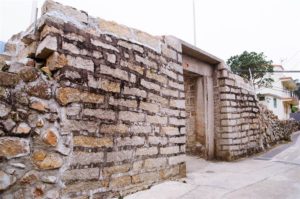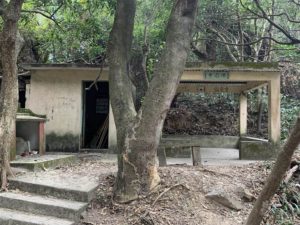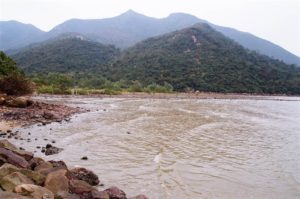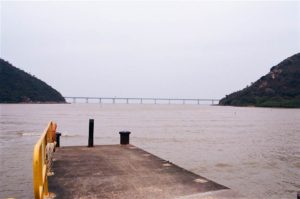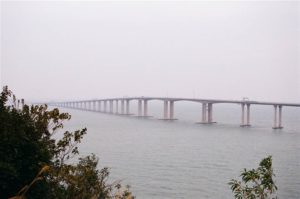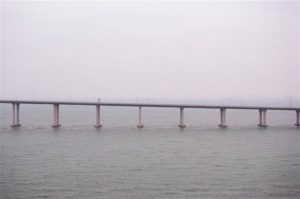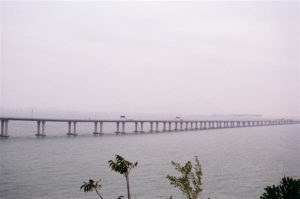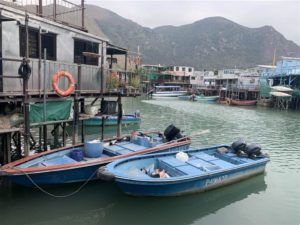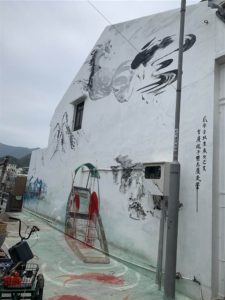Four Hours on the Tung O Ancient Trail

Be prepared for a full four hours of walk if you want to hike the Tung O Ancient Trail. The trail takes one from Tung Chung to Tai O on foot. We went on one of the coldest days this winter. Besides the long walk, we had to prepare for the demanding weather as well.
The Itinerary
Tung Chung → Hau Wong Temple → (50 minutes) Hau Wong Bridge → (1:05) San Tau Village → Hau Hok Wan → (2 hours) Sha Lo Wan → Sham Shek Tsuen → (2:45) Sham Wat Wan → (3:45) Signpost of the North Lantau Obelisk → Tai O.
We met at the Tung Chung Station. At Exit A, we walked the pedestrian and bicycle system, then took the general direction of the coast to reach the beginning of the Tung O Ancient Trail. The walk from Tung Chung Station took us about half hour. The very first section of this trail was delightful: lined with old trees and paved.
About ten minutes into the trail, we passed by the Hau Wong Temple.
The Hau Wong Temple
The Hau Wong Temple was built in 1765 during the Qianlong reign of the Qing dynasty. The villagers of Tung Chung believed that the former general Yang Liangjie of the Southern Song Dynasty (whose title was Hau Wong) could protect them against plagues. Because it was believed that this general has fought battles against the Yuan dynasty forces in the Tung Chung area to defend the last emperor of Song Dynasty, Di Bing, the villagers built the Hau Wong Temple at this site to commemorate the event.[i] Hau Wong Yang Liangjie is also immortalised in the Hau Wong Temple of Kowloon City, as the people of Hong Kong commemorate his protection of the last emperor of Song Dynasty to the refuge of Kowloon City. Therefore the villagers of Tung Chung “invited” the presence of Hau Wong from Kowloon City in this sister temple that they built.[ii]
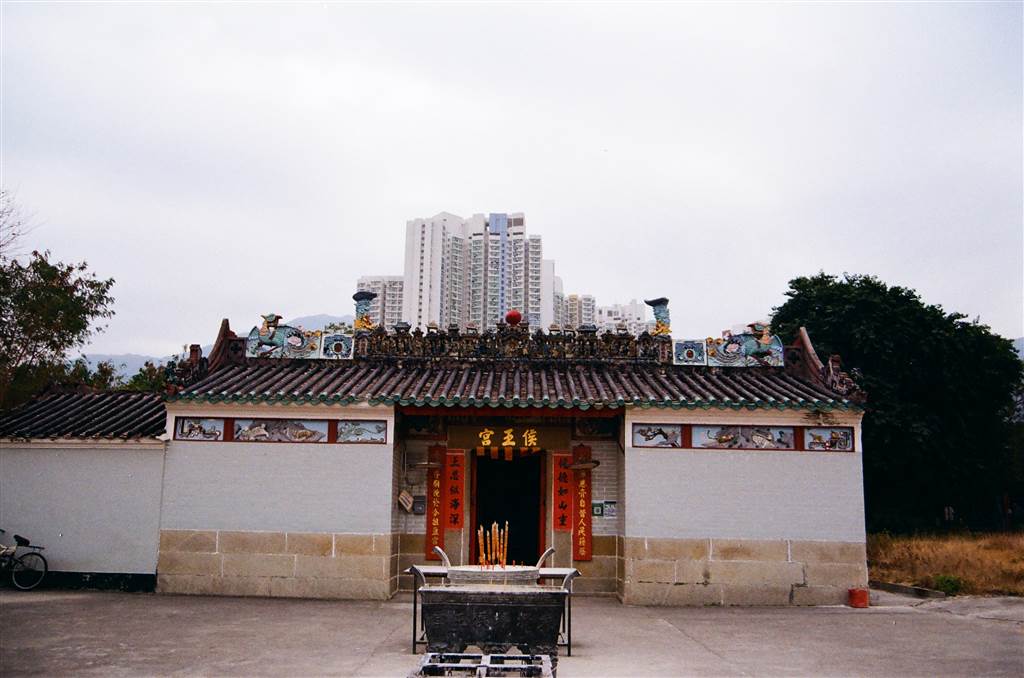
On March 6 of the lunar calendar each year, both the people of Kowloon City and Lantau Island celebrate the birthday of Hau Wong. The Hau Wong Festival of Tung Chung last three days.[iii]
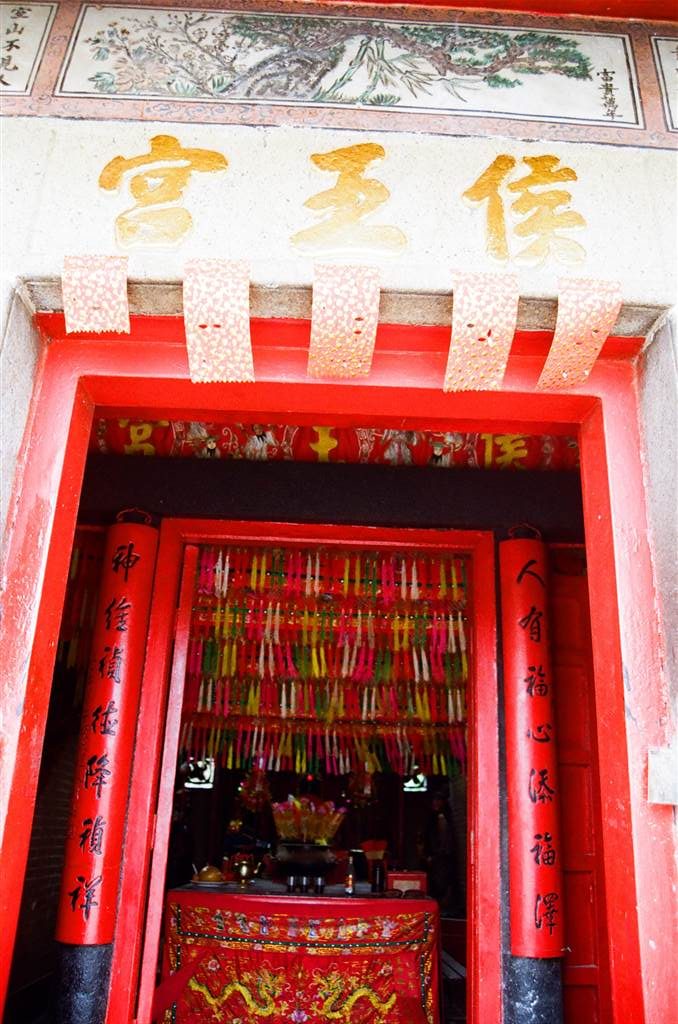
Soon after, we passed through the Hau Wong Bridge.
On our way we passed by many villages and the views were picturesque. At this late morning the walk was pleasant. About an hour or more later we worked up a little sweat and it did not feel cold.
The San Tau Village
The San Tau Village has had four hundred years of history. Its old houses line the Tung O Ancient Trail. Despite their good conditions, many of these houses are now vacant. Yet there are signs of revitalization as well. One of the most visited structures of San Tau Village is the San Tau School, but we did not see that this time.
The trail continues to take us along the coast. This following should be the view at Hau Hok Wan, looking onto Chek Lap Kok, the Hong Kong International Airport:
We passed by a number of other villages. This is Sha Lo Wan Tsuen. There are some things to see in Sha Lo Wan, such as the thousand-year comphor tree and a temple, but we wanted to get through the trail on time, so we did not stop at Sha Lo Wan.
The Irrigation System of Sham Shek Tsuen
Then we came to Sham Shek Tsuen. At this post, we saw the history of the construction of Sham Shek Tsuen’s irrigation system. It was built in 1959 to alleviate the water demands of the farming population in Sham Shek Tsuen.
Sham Wat Wan and the Hong Kong-Zhuhai-Macao Bridge
The next stop is Sham Wat Wan, and at the following section of the trail on mid-mountain range, we saw exceptional views of the Hong Kong-Zhuhai-Macao Bridge. Tai O was within comfortable reach by now.
Photos above and below: Panoramic views at the Sham Wat Wan section of the Tung O Ancient Trail.
This sign points to the North Lantau Obelisk.
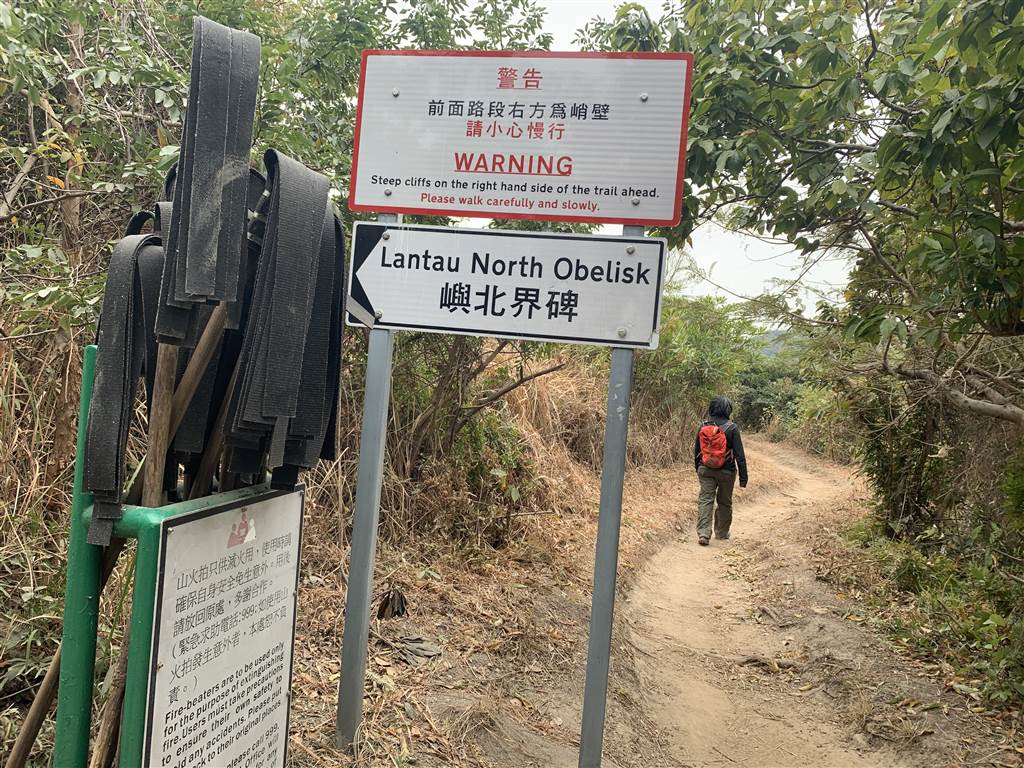
The British established the obelisk in 1902 to mark the boundary of Lantau Island.[iv] However, it would take some upward climbing to see this stone, and we decided to head right on to Tai O instead. The afternoon sun was waning a bit and we were feeling cold again.
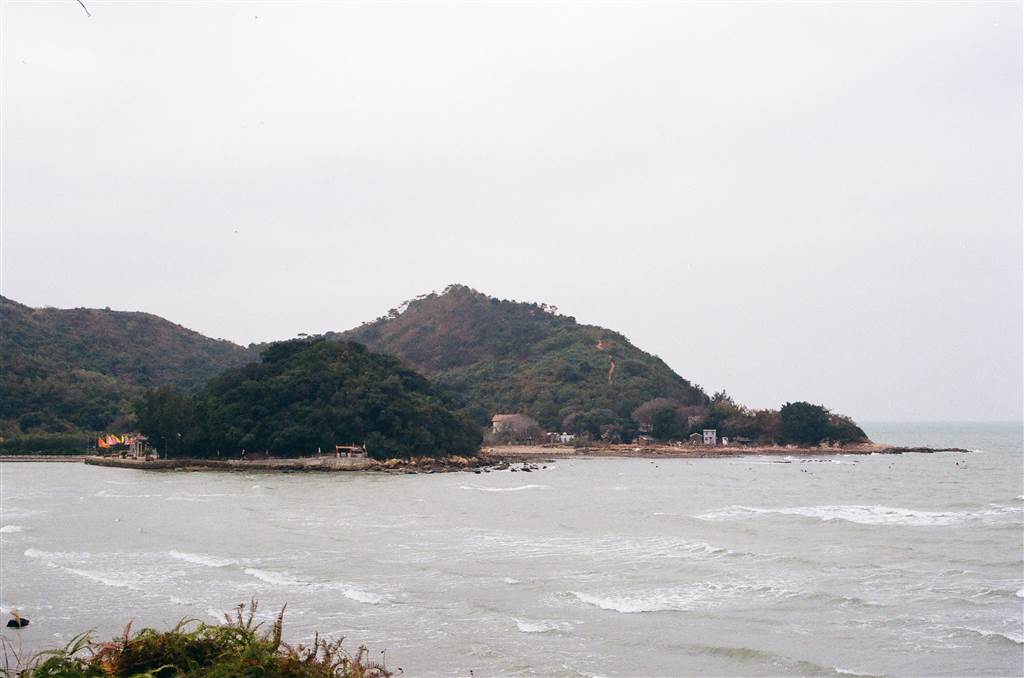
Finally, four hours later, we arrived at Tai O. We opted for rice casserole as our late lunch. It satisfied the hunger and eased the cold.
Reminders
Because most of this trail is coastal, the inclines are gentle. There are some slopes of medium intensity, but overall the hike is very easy. It is simply a long walk, that’s all.
Bring a lot of water with you if you are hiking this trail on hot days. There are places for supplies, such as the stores and tea cafes of Sham Wat Wan, but they are toward the latter parts of the trail. Needless to say, once you are in Tai O there are more than enough choices for food.
We did not really stop to do any sightseeing on this trip because we were rushed for time. If you would like to visit the villages, climb up to the North Lantau Obelisk and see more, allow for an extra hour or so.
[i] The Wikipedia on the Hau Wong Temple of Tung Chung.
[ii] Nearsnake.com, The Background of Song Wong Toi.
[iii] Thaihongkong.com, Hau Wong Festival.
[iv] From Tung Chung to Tai O.

